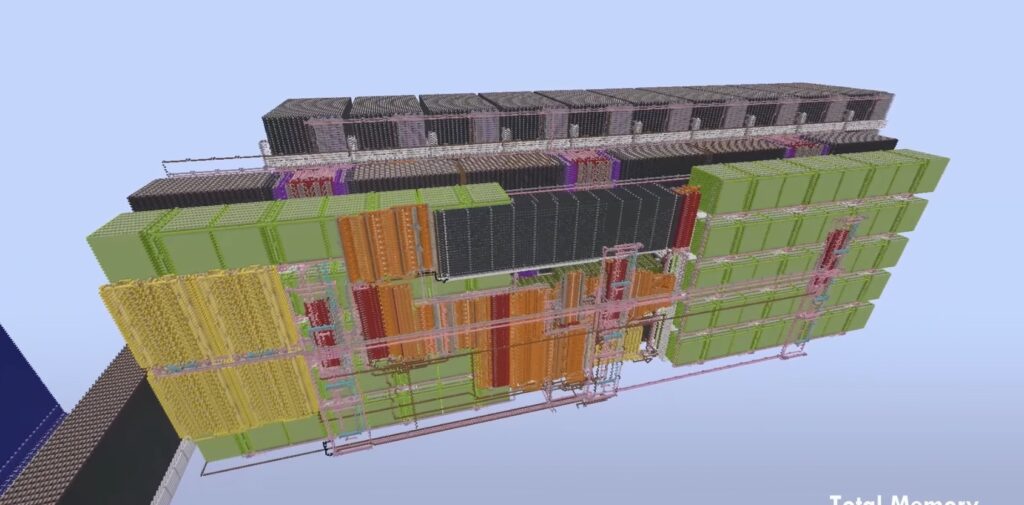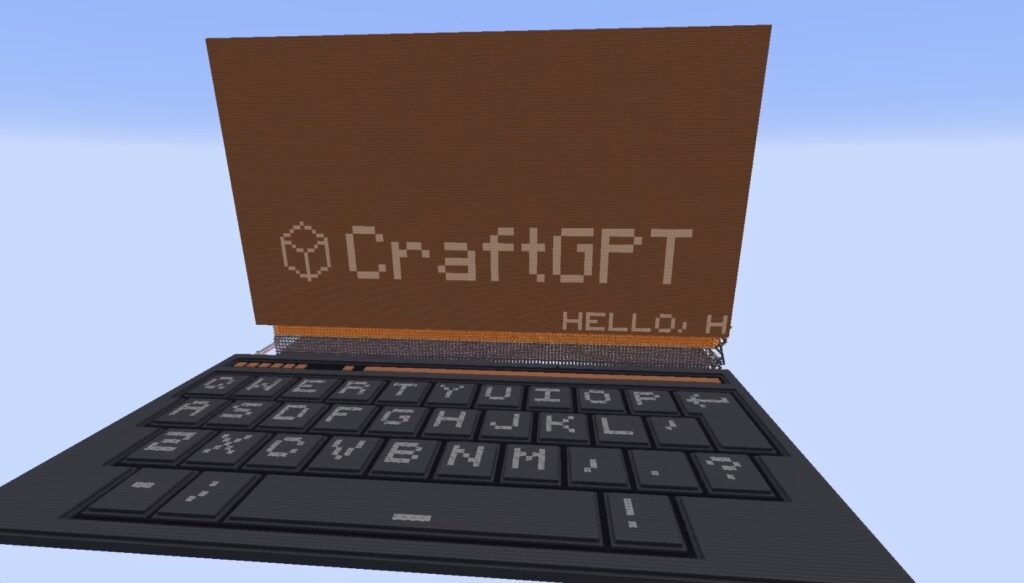When Virtual Blocks Meet AI Brilliance – A Gamer’s Epic Quest to Code Intelligence Inside a Game
- Engineering Marvel in a Virtual World: Sammyuri, renowned for crafting a 1Hz CPU in Minecraft, has constructed CraftGPT, a functional 5-million-parameter AI language model entirely from Redstone blocks, demonstrating the boundless creativity of in-game engineering.
- Technical Feats and Limitations: Trained on the TinyChat dataset, this colossal build (spanning 1,020 x 260 x 1,656 blocks and totaling 439 million) runs inference for basic conversations, but expect quirky outputs and hours-long response times due to the game’s inherent performance constraints.
- Broader Implications for Innovation: This project highlights how Minecraft’s Redstone system can simulate complex computing concepts like tokenizers and matrix multipliers, inspiring hobbyists, educators, and AI enthusiasts to explore unconventional platforms for learning and experimentation.
In the ever-expanding universe of Minecraft, where creativity knows no bounds, one dedicated player has pushed the boundaries of what’s possible within the game’s pixelated confines. Sammyuri, a famed Minecraft enthusiast already celebrated for building a fully functional 1Hz CPU inside the game, has unveiled CraftGPT – a working ChatGPT-like AI model constructed entirely from Redstone blocks. This isn’t just a gimmick; it’s a testament to human ingenuity, blending the whimsical world of block-building with the sophisticated realm of artificial intelligence. Spanning an enormous 1,020 x 260 x 1,656 blocks and comprising a staggering 439 million blocks in total, CraftGPT represents a monumental feat of virtual engineering. A captivating video fly-by, captured using the Distant Horizons mod, showcases the sheer scale of this in-game computer, inviting viewers to marvel at its intricate design.
At its core, CraftGPT is a small language model with 5,087,280 parameters, meticulously trained in Python on the TinyChat dataset – a collection of basic English conversations. This training enables the AI to hold very short dialogues, with a context window of just 64 tokens. The model boasts an embedding dimension of 240, a vocabulary of 1,920 tokens, and consists of six layers, making it a simplified yet functional replica of more advanced LLMs like ChatGPT. Sammyuri went the extra mile by quantizing most weights to 8 bits for efficiency, while keeping embedding weights at 18 bits and LayerNorm weights at 24 bits. Remarkably, the entire setup was built without relying on command blocks or data packs, staying true to Minecraft’s core mechanics. Redstone, the game’s equivalent of electronic circuitry, forms the backbone: components like tokenizers and matrix multipliers were painstakingly assembled block by block, as demonstrated in the project’s assembly video on GitHub.

CraftGPT isn’t poised to dethrone traditional AI chatbots anytime soon. Sammyuri himself tempers expectations, warning that the model is “very prone to going off-topic, producing responses that are not grammatically correct, or simply outputting garbage.” This quirkiness stems from its modest size and the unconventional platform – after all, Minecraft wasn’t designed for high-speed AI inference. The real showstopper, however, is the performance. Even with optimizations like running on the Minecraft High Performance Redstone Server (MCHPRS) at an accelerated tick rate of about 40,000x normal speed, generating a response to a simple prompt can take a couple of hours. It’s a far cry from the instant replies we’re accustomed to from apps and websites, but that’s part of the charm: this project prioritizes the “wow” factor over practicality.
From a broader perspective, CraftGPT transcends mere novelty and taps into something profound about innovation in gaming and technology. Minecraft has long been a sandbox for aspiring engineers, where Redstone allows players to simulate real-world electronics – from basic circuits to complex processors. Sammyuri’s creation elevates this to new heights, illustrating how game mechanics can demystify advanced concepts like neural networks and language modeling. For educators, it’s a goldmine: imagine students building their own AI models in a fun, interactive environment, learning about parameters, embeddings, and quantization without needing expensive hardware. Hobbyists and AI enthusiasts might draw inspiration to experiment with unconventional computing, perhaps sparking ideas for low-resource AI in real-world scenarios, like edge devices or educational tools.

This project underscores the vibrant community around Minecraft mods and servers. Tools like Distant Horizons for rendering vast builds and MCHPRS for boosting performance highlight how collaborative ecosystems extend the game’s potential far beyond its original scope. Sammyuri’s work, shared openly on GitHub, invites others to tinker, test, and improve upon CraftGPT – though users should brace for those lengthy wait times. In an era where AI is often shrouded in corporate black boxes, CraftGPT offers a transparent, hands-on glimpse into how these systems work, all within a game that’s captivated millions.
While CraftGPT won’t replace your daily chatbot, it stands as a beacon of what’s possible when passion meets persistence. Sammyuri’s Redstone masterpiece reminds us that innovation isn’t confined to silicon chips and data centers – sometimes, it emerges from the simple act of stacking blocks in a virtual world. If you’re inspired to dive in, head to the GitHub repo, but remember: patience is key, and the real reward lies in the journey of creation itself.


